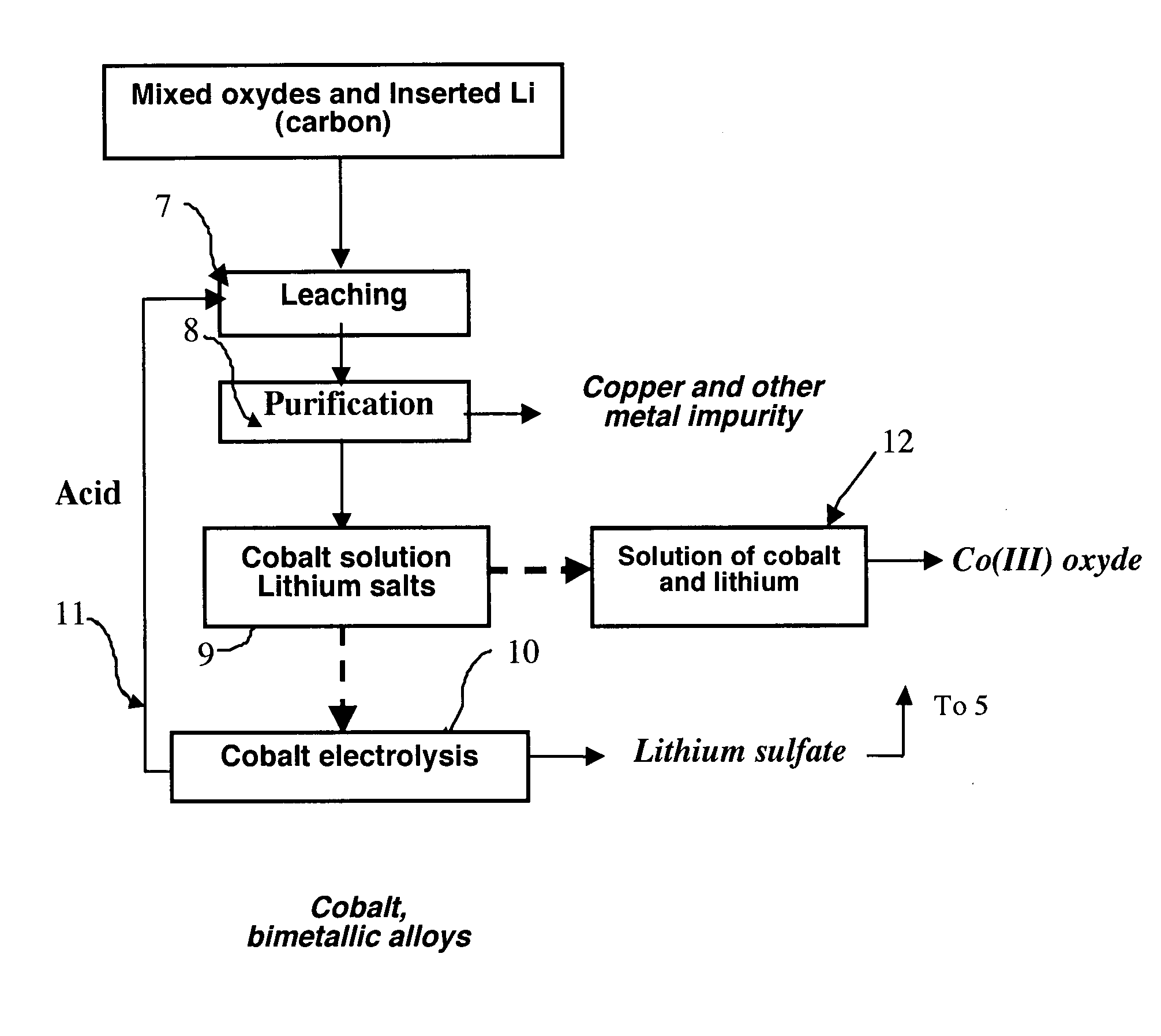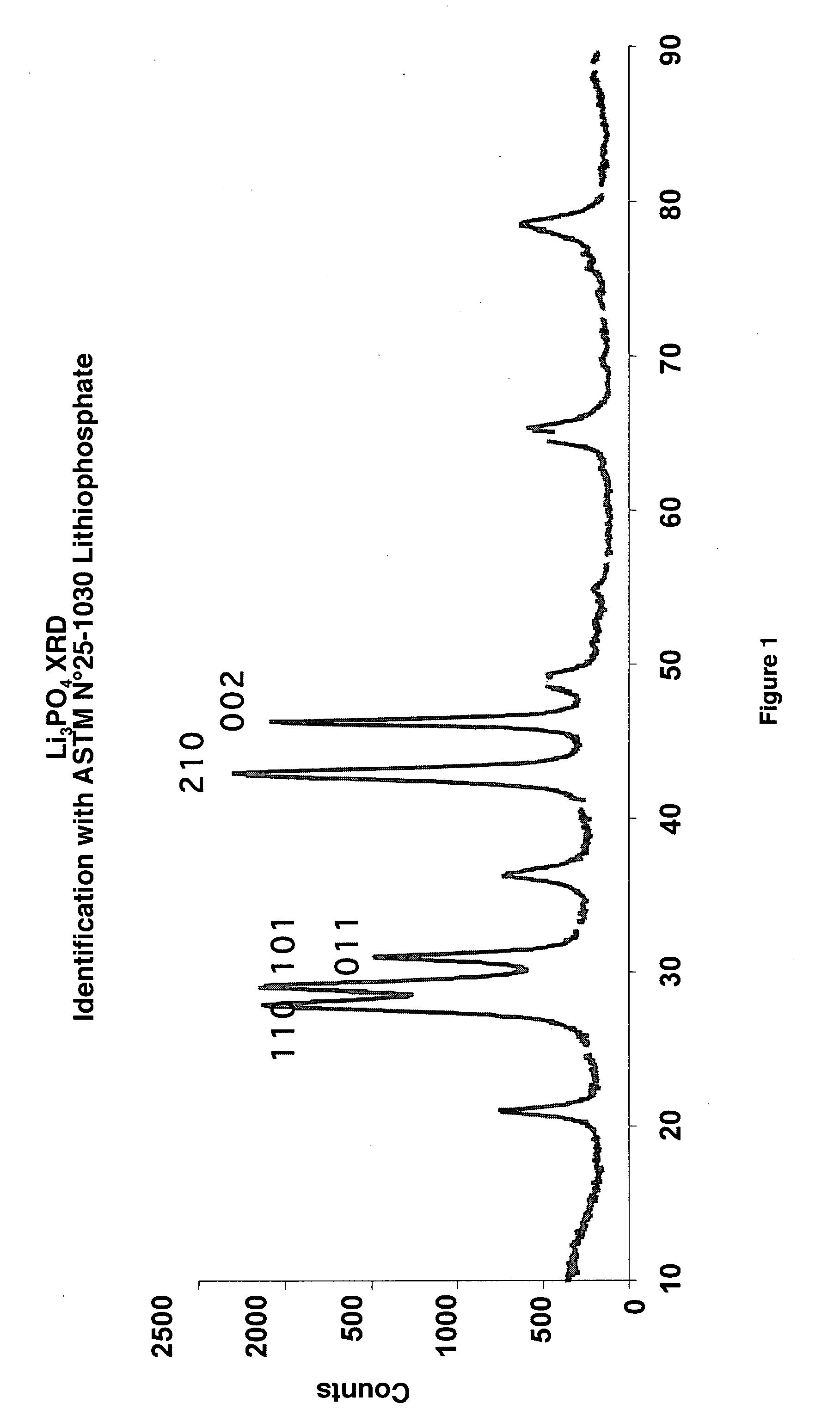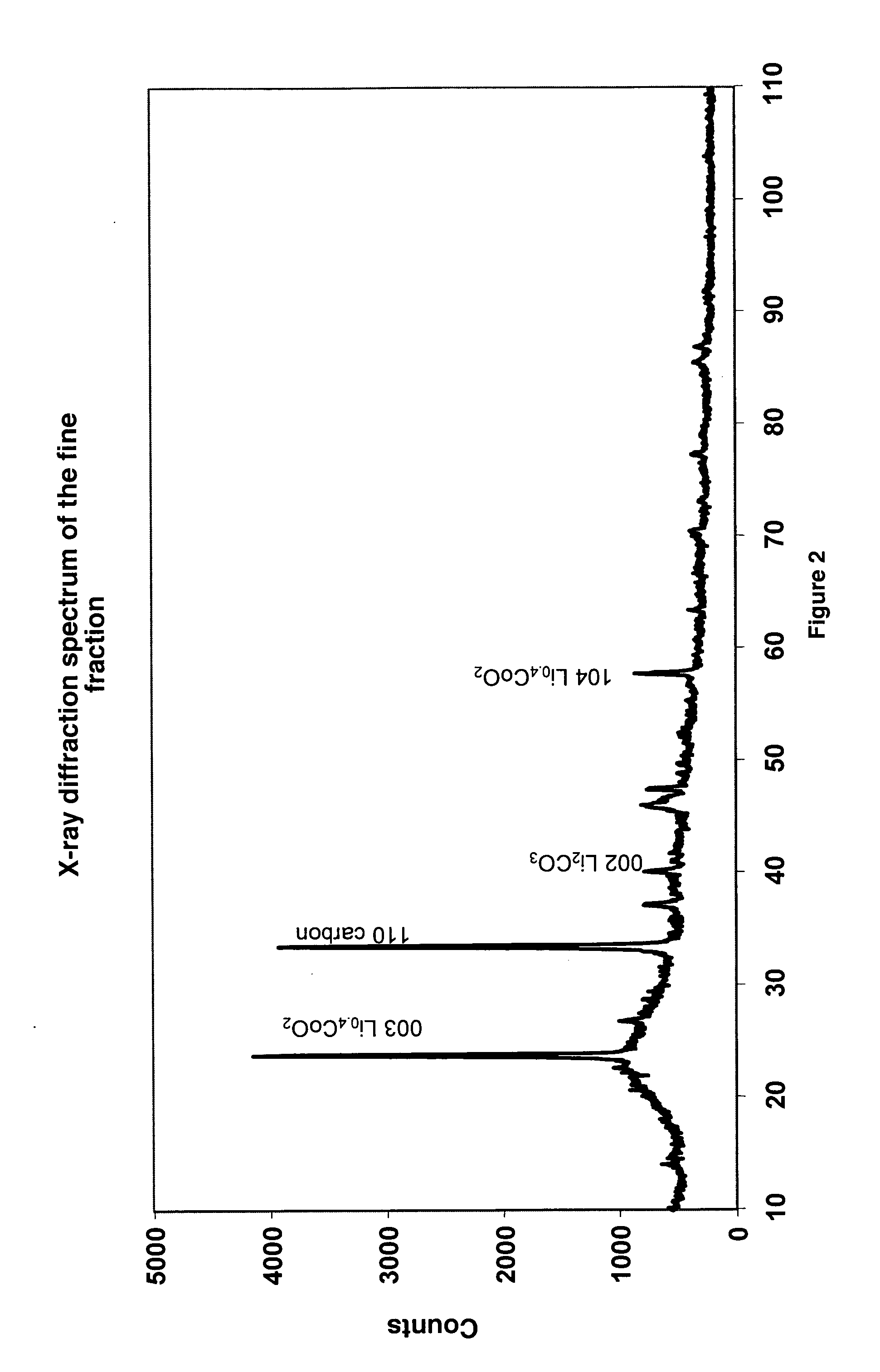Method for the mixed recycling of lithium-based anode batteries and cells
a lithium-based anode battery and mixed recycling technology, applied in the field of hydrometallurgical treatment of cells and batteries, can solve the problems of high toxicity, incongruity of metal dispersing in waste, and inability to degrade elements,
- Summary
- Abstract
- Description
- Claims
- Application Information
AI Technical Summary
Benefits of technology
Problems solved by technology
Method used
Image
Examples
first embodiment
[0033] In the invention, the crushing operation is performed beforehand by shredding by means of a rotary shearing machine with a low speed of rotation preferably less than 11 revolutions per minute (rpm). This step is designed to release the internal stresses of the batteries. In a second step, the shredded charge is crushed in a rotor system rotating at a mean speed preferably lower than 90 rpm.
second embodiment
[0034] In the present invention, the two crushing systems are placed in a tightly sealed enclosure made inert by means of a gas that is either argon, or carbon dioxide, or a suitable mixture of the two gases. Examination of the densities of the gases show that argon and carbon dioxide will provide a good protection above the crushed charge.
GasDensityNitrogen1.229Oxygen1.404Argon1.743Carbon dioxide1.931
[0035] These two gases will expel the oxygen and nitrogen and provide a gas covering above the mill blades and above the crushed batteries. In addition, the presence of carbon dioxide will result in initiating passivation of the metallic lithium by formation of lithium carbonate at the surface, which slows down the reactivity of this metal.
[0036] In the case of a mixture of these two gases, the proportion varies from 10% to 90% of argon and from 90% to 10% of carbon dioxide, but the proportion of argon in the mixture is advantageously comprised between 10% and 35%.
[0037] Gas injectio...
PUM
| Property | Measurement | Unit |
|---|---|---|
| Temperature | aaaaa | aaaaa |
| Temperature | aaaaa | aaaaa |
| Temperature | aaaaa | aaaaa |
Abstract
Description
Claims
Application Information
 Login to View More
Login to View More - R&D
- Intellectual Property
- Life Sciences
- Materials
- Tech Scout
- Unparalleled Data Quality
- Higher Quality Content
- 60% Fewer Hallucinations
Browse by: Latest US Patents, China's latest patents, Technical Efficacy Thesaurus, Application Domain, Technology Topic, Popular Technical Reports.
© 2025 PatSnap. All rights reserved.Legal|Privacy policy|Modern Slavery Act Transparency Statement|Sitemap|About US| Contact US: help@patsnap.com



